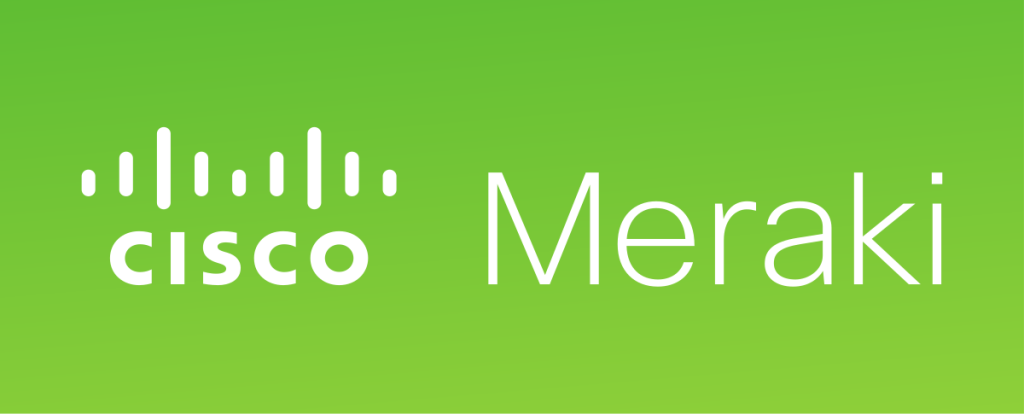BYOD policies are no longer optional. As organizations embrace hybrid and remote work, the need for secure, scalable access from employee-owned devices becomes central to IT planning. The Cisco Meraki Teleworker Gateway offers a streamlined and secure way to extend your network to remote locations and BYOD environments without compromising control or visibility.
With built-in VPN, application-aware firewalls, and policy-based segmentation, Meraki’s Z-series gateways allow organizations to provide remote users with trusted access to corporate resources, while enforcing strict control over what BYOD devices can access and when.
This guide explores how the Meraki Teleworker Gateway simplifies secure BYOD deployments and highlights configuration strategies that enhance security and operational efficiency.
The Meraki Z-series appliances are purpose-built for remote connectivity. Unlike traditional VPN hardware or software-based agents, these gateways offer a plug-and-play setup. Devices connect automatically to the corporate network via a site-to-site VPN tunnel, configured and managed through the Meraki dashboard.
For BYOD scenarios, the Z-series gateway provides Layer 3 security controls, per-device VLAN assignments, and support for role-based group policies. IT admins can isolate personal devices from sensitive internal systems while still offering access to business-critical apps.
This balance between usability and policy enforcement is key in modern environments. Employees can use their own laptops or tablets without burdening IT with complex client setups or constant helpdesk tickets.
Meraki Teleworker Gateway devices, such as the Z-Series appliances, are designed specifically for remote environments. These compact devices use Auto VPN technology to create encrypted tunnels back to the main office network, allowing remote employees and students to access internal resources as if they were on-site.
What makes the Meraki Teleworker solution stand out is its seamless integration with the Meraki dashboard. IT administrators can pre-configure devices before shipping them to users. Once plugged in, the Teleworker Gateway connects automatically to the cloud, fetches its settings, and establishes a secure tunnel.
Beyond VPN access, these gateways support advanced features including VLAN tagging, SSID broadcasting, traffic shaping, and device-level analytics. Organizations managing large remote or BYOD fleets benefit from zero-touch provisioning and granular policy enforcement, making deployment both simple and scalable.

Meraki BYOD deployment is more than simply allowing personal laptops or smartphones on the network. A well-executed strategy starts with device segmentation. By separating personal and corporate traffic using VLANs and SSIDs, Meraki Teleworker Gateways ensure that sensitive data is never exposed to unmanaged devices.
With built-in Layer 7 firewall rules, IT teams can block access to risky applications or restrict bandwidth for non-work-related traffic. DNS-layer protection, integrated with Cisco Umbrella, provides another layer of Meraki security for BYOD users, protecting them from phishing domains and malicious sites even when off the VPN.
Meraki BYOD strategies also benefit from identity-based access. Devices can be authenticated using WPA2-Enterprise with RADIUS or integrated with SAML and Azure AD. This ensures access is granted only to approved users and devices that meet organizational security standards.
Provisioning Meraki Teleworker Gateways is a streamlined process. Each Z-Series device is claimed in the dashboard and assigned a network profile. IT administrators can then configure firewall rules, SSID settings, and Auto VPN parameters all from a single pane of glass.
To support BYOD environments, separate SSIDs can be created for personal and managed devices. For instance, one SSID might route directly to the internet for guest traffic, while another uses a secure VPN tunnel for internal access. This architecture isolates personal use from enterprise data and supports compliance with zero-trust network principles.
Administrators can also enable client tracking using Meraki’s unique device fingerprinting. This allows them to monitor what types of devices are connecting to the network, which applications are being used, and how much bandwidth is being consumed. For Meraki BYOD policies, this visibility is essential for adjusting access levels or flagging risky behavior.
One of the main risks in BYOD environments is the lack of control over device configurations. With Meraki Teleworker Gateways, security is enforced at the network level. IT teams can apply firewall rules, traffic shaping policies, and security scanning tools, regardless of the endpoint’s OS or security posture.
Additionally, Meraki BYOD networks benefit from integration with Cisco Duo. This allows organizations to implement multi-factor authentication (MFA) for VPN access. A user attempting to connect from a personal device must pass both a credential check and a second factor, reducing the likelihood of account compromise.
In environments where compliance is critical, such as healthcare, finance, or education, Meraki BYOD controls also support PCI and HIPAA alignment. Features like centralized logging, alerting, and packet capture further enhance audit readiness.
The Meraki dashboard provides real-time telemetry for every device connected to a Teleworker Gateway. IT teams can view traffic flow, client health, and device history. This visibility helps identify unauthorized connections or misconfigured devices before they cause security incidents.
Administrators can also set up alerts based on device type, bandwidth usage, or connection failures. These alerts can be sent via email, SMS, or API for easy integration into ticketing or incident response systems. In a Meraki BYOD environment, these alerts can help enforce usage policies and maintain optimal performance.
BYOD onboarding is also simplified. Guest SSIDs can be configured with splash pages, click-through agreements, or credential-based access. These tools allow organizations to maintain a professional and secure network experience, even for unmanaged devices.
As organizations grow or adopt hybrid work as a permanent model, Meraki Teleworker Gateways scale effortlessly. IT departments can manage hundreds or thousands of remote devices from a single dashboard. Network templates allow rapid provisioning across departments or user roles, reducing configuration errors and support overhead.
With API access, organizations can automate onboarding and network configuration. This is especially valuable for companies managing seasonal workers, contractors, or large student populations. Meraki BYOD policies can be embedded into provisioning scripts, ensuring every user is deployed securely from day one.
Moreover, firmware updates, security patches, and configuration backups are handled through Meraki’s cloud infrastructure. This ensures every Teleworker device is kept up to date without requiring on-site support, reducing risk and operational cost.

Before provisioning Meraki Teleworker Gateways for remote users or BYOD zones, review these key steps to ensure a secure and functional deployment:
By front-loading this planning phase, IT teams reduce misconfiguration risk and improve supportability across distributed users.
The power of the Meraki dashboard lies in its simplicity and control. To ensure BYOD environments remain secure, apply these best-practice configurations across your Z-series gateways:
Configure multiple VLANs on the Z-series gateway and assign different port profiles to them. For example:
This segmentation limits lateral movement and supports micro-segmentation at the edge.
Use group policies to define Layer 7 firewall rules based on applications and ports. For instance, block peer-to-peer file sharing on BYOD VLANs while allowing access to cloud apps like Microsoft 365 or Salesforce.
These rules can also limit traffic based on time schedules, MAC addresses, or VLAN tags.
Enable VPN logging and monitor device sessions from the Meraki dashboard. View current VPN clients, device details, and traffic usage. This visibility allows administrators to detect anomalous behavior quickly, such as excessive data transfer or login attempts from unknown devices.
Dashboard alerts can notify IT when thresholds are crossed, helping teams respond faster to policy violations or security risks.
Stratus Information Systems helps IT teams securely extend corporate networks to BYOD environments using Meraki Teleworker Gateway. From VPN configuration to policy enforcement, we make sure your deployment is seamless, secure, and scalable.
Reach out today to talk to our Cisco-certified experts and build a secure remote access solution your team can trust.